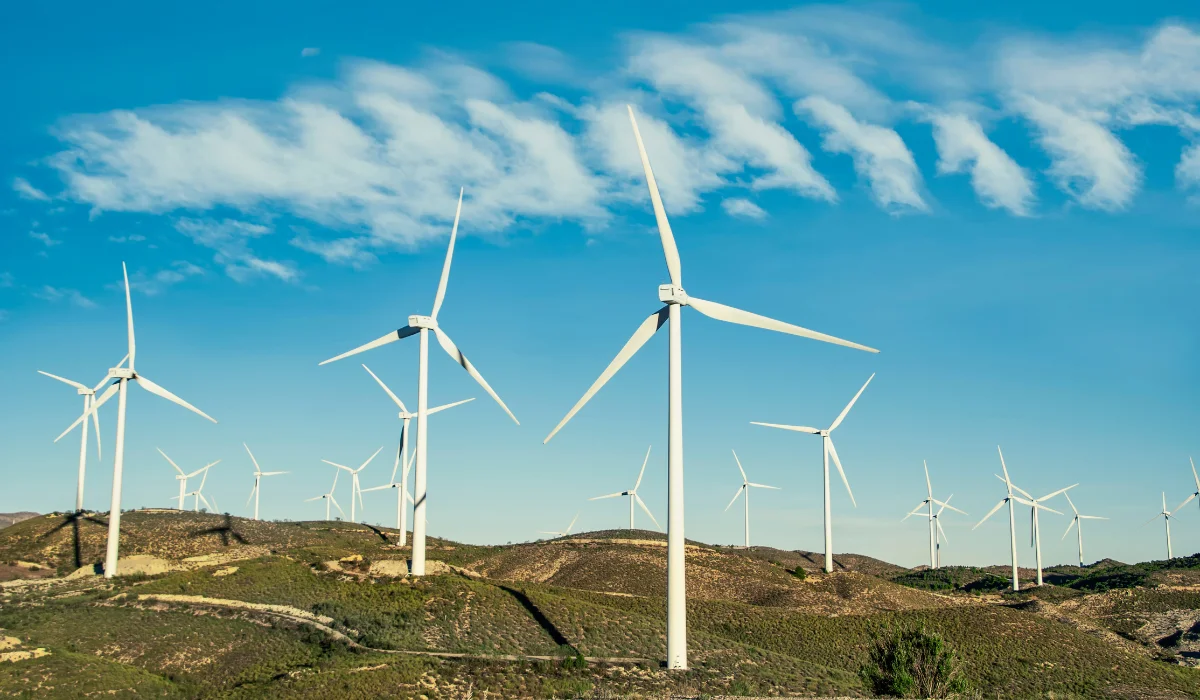The global shift towards renewable energy sources has paved the way for innovative solutions to meet the growing demand for clean and sustainable power. Among these solutions, wind energy stands tall as a key player in the transition to a greener future. Harnessing the power of the wind has proven to be a viable and effective means of generating electricity while reducing our dependence on fossil fuels and mitigating the impact of climate change.
In this article, we will delve into the world of wind energy, understanding how it works, its global impact, technological advancements, economic and environmental benefits, and the prospects and challenges that lie ahead.
Understanding Wind Energy
At its core, wind energy involves converting the kinetic energy of wind into mechanical energy and electricity. This process is achieved by installing wind turbines, which consist of rotor blades, a tower, a generator, and various other components.
When the wind blows, it causes the rotor blades to rotate, thereby driving the generator and producing electricity. The size and capacity of wind turbines vary, with larger turbines generating more power.
Wind Energy on a Global Scale
Wind energy has gained significant traction worldwide, with an increasing number of countries embracing its potential. Today, wind energy plays a pivotal role in the global energy mix, contributing to the reduction of greenhouse gas emissions and combating climate change.
Countries such as China, the United States, Germany, and India have emerged as leaders in wind energy production and capacity, taking advantage of their good wind resources and implementing robust policies to support their growth.
See Also: Why Energy Audits Matter – A Complete Checklist for Your Commercial Building
Advantages and Challenges
One of the key advantages of wind energy is its renewable nature. The wind is an abundant resource that is continually replenished, making it a sustainable source of power. Additionally, wind energy is clean, emitting zero greenhouse gas emissions during operation, unlike traditional fossil fuel-based power generation. It also reduces our reliance on finite fossil fuel reserves, promoting energy security.
However, wind energy does come with its share of challenges. One major concern is the intermittency of wind. As wind speed varies, so does the electricity output of wind turbines. This variability needs to be managed through grid integration and storage solutions to ensure a stable and reliable power supply.
Visual impact and potential effects on wildlife are also considerations when planning and implementing wind energy projects, requiring careful site selection and environmental assessments.
Technological Advancements and Innovations
The wind energy sector has witnessed remarkable technological advancements over the years. These advancements have focused on improving the efficiency of wind turbines, enhancing their capacity to capture and convert wind energy into electricity.
Innovations include larger rotor blades, advanced control systems, and taller towers to reach higher wind speeds. Additionally, the development of floating wind turbines has opened up new possibilities for offshore wind energy, expanding the potential for harnessing wind power in deeper waters.
Furthermore, the integration of smart grid technologies and storage solutions has enhanced the flexibility and reliability of wind energy systems. Advanced data analytics and artificial intelligence are being utilized to optimize wind farm operations, enabling better prediction of wind patterns, maintenance schedules, and performance optimization.
See Also: Smart Cities Trends
Economic and Environmental Benefits
Wind energy brings numerous economic and environmental benefits. Wind power projects create job opportunities throughout the value chain, from manufacturing and installation to operation and maintenance.
Local communities benefit from these projects through increased employment, infrastructure development, and revenue generation. Moreover, wind energy contributes to reducing greenhouse gas emissions and air pollution, improving public health, and mitigating climate change.
In terms of cost competitiveness, wind energy has made significant progress. The levelized cost of electricity (LCOE) for wind has become increasingly competitive with conventional energy sources, making wind energy an economically viable option.
The long-term cost savings, coupled with incentives and government support, further contribute to its attractiveness as an investment in the energy sector.
Future Prospects and Challenges
Looking ahead, wind energy holds immense potential for further growth and development. The continuous advancement of wind turbine technology, along with ongoing research and development, will lead to even more efficient and cost-effective wind energy solutions.
Furthermore, the integration of wind energy with other renewable sources such as solar and energy storage systems will create a more resilient and diversified energy mix.
However, challenges remain. Public perception and acceptance, grid integration, and policy support are critical factors that will shape the future of wind energy. Addressing these challenges will require stakeholder collaboration, robust regulatory frameworks, and public awareness initiatives to foster understanding and support for wind energy projects.
Also Read: Everything You Need to Know About Electric Actuators
Conclusion
Harnessing the power of the wind through wind energy has revolutionized the global energy landscape. With its renewable nature, environmental benefits, and technological advancements, wind energy has become a key player in the transition to a sustainable future.
By exploring its potential, embracing innovation, and addressing challenges, we can unlock the full potential of wind energy and accelerate the shift toward a cleaner, greener, and more prosperous world.





